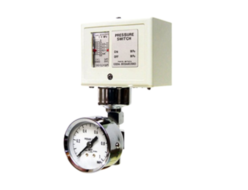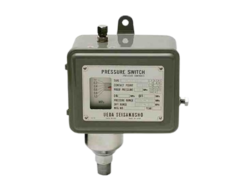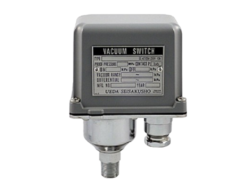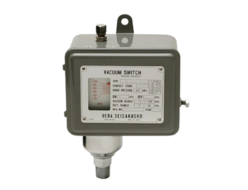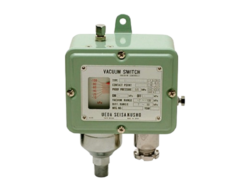Ueda Seisakusho
Ueda Seisakusho PU3 Series Pressure Switch
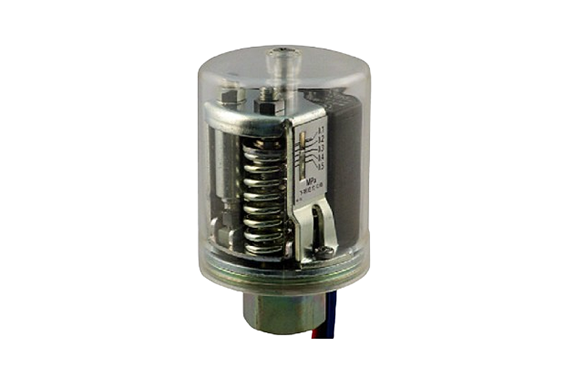
Manufacturer: Ueda Seisakusho Co., Ltd.
Model : PU3 series
Features
- The PU3 series is a small, lightweight, and simple design, with two adjustment screws that allow the pressure setting and opening/closing pressure difference (ON-OFF width) to be freely adjusted.
- The electrical contacts have a snap action mechanism and are resistant to vibration, especially chattering.
- The pressure receiving part uses a diaphragm (synthetic rubber), which ensures a long life along with the internal mechanism parts.
- Careful consideration is required depending on the type of fluid, so please consult our sales representative for details.
Product Information
| Item | Specification |
|---|---|
| Product Name | Indoor small pressure switch |
| Size | W.54Φ x H.89 mm |
| Durability | Electrical & Mechanical Life: 300,000 times or more |
| Weight | Approx. 0.35 kg |
| Pressure Receiving Part | Diaphragm Type |
| Material | Synthetic rubber (NBR) |
| Contact Configuration | Single Pole Double Throw (S.P.D.T.) 1a1b (1C) |
| Wiring Method | VSF 1.25 sq × 300 mm |
| Insulation Resistance | DC 500V Megger — 100 MΩ or more |
| Dielectric Strength | AC 2,000V for 1 minute |
Option
- Pressure receiving part made of fluororubber (FKM)
- Body mounting feet (brackets) included
Specifications
| Model | Pressure Adjustment Range (Range) MPa | ON-OFF Pressure Differential Range (Diff.) MPa | Pressure Resistance (MPa) | ||
|---|---|---|---|---|---|
| Smallest | Largest | ||||
| PU3-01-□C | 0.02 ~ 0.16 | 0.03 | 0.04 | ~ 0.1 | 1.5 |
| PU3-03-□C | 0.02 ~ 0.3 | 0.03 | 0.04 | ~ 0.2 | 1.5 |
| PU3-06-□C | 0.05 ~ 0.6 | 0.04 | 0.06 | ~ 0.25 | 1.5 |
| PU3-10-□C | 0.2 ~ 1.0 | 0.07 | 0.09 | ~ 0.3 | 1.5 |
| PU3-15-□CV | 0.2 ~ 1.5 | 0.1 | 0.18 | ~ 0.45 | 2.0 |
Model Code Explanation

| (A) | 06 = Maximum pressure adjustment range: 0.6 MPa |
| (B) | 2C = Connection diameter Rc 1/4 (PT 1/4 thread) 3C = Connection diameter Rc 3/8 (PT 3/8 thread) |
| (C) | No symbol = Diaphragm material: NBR (※Standard) V = Diaphragm material: FKM |
| (D) | No symbol = Without body mounting bracket (※Standard) B = With body mounting bracket |
- Note : Only the PU3-15 type uses FKM (fluororubber) for the diaphragm material as standard.

